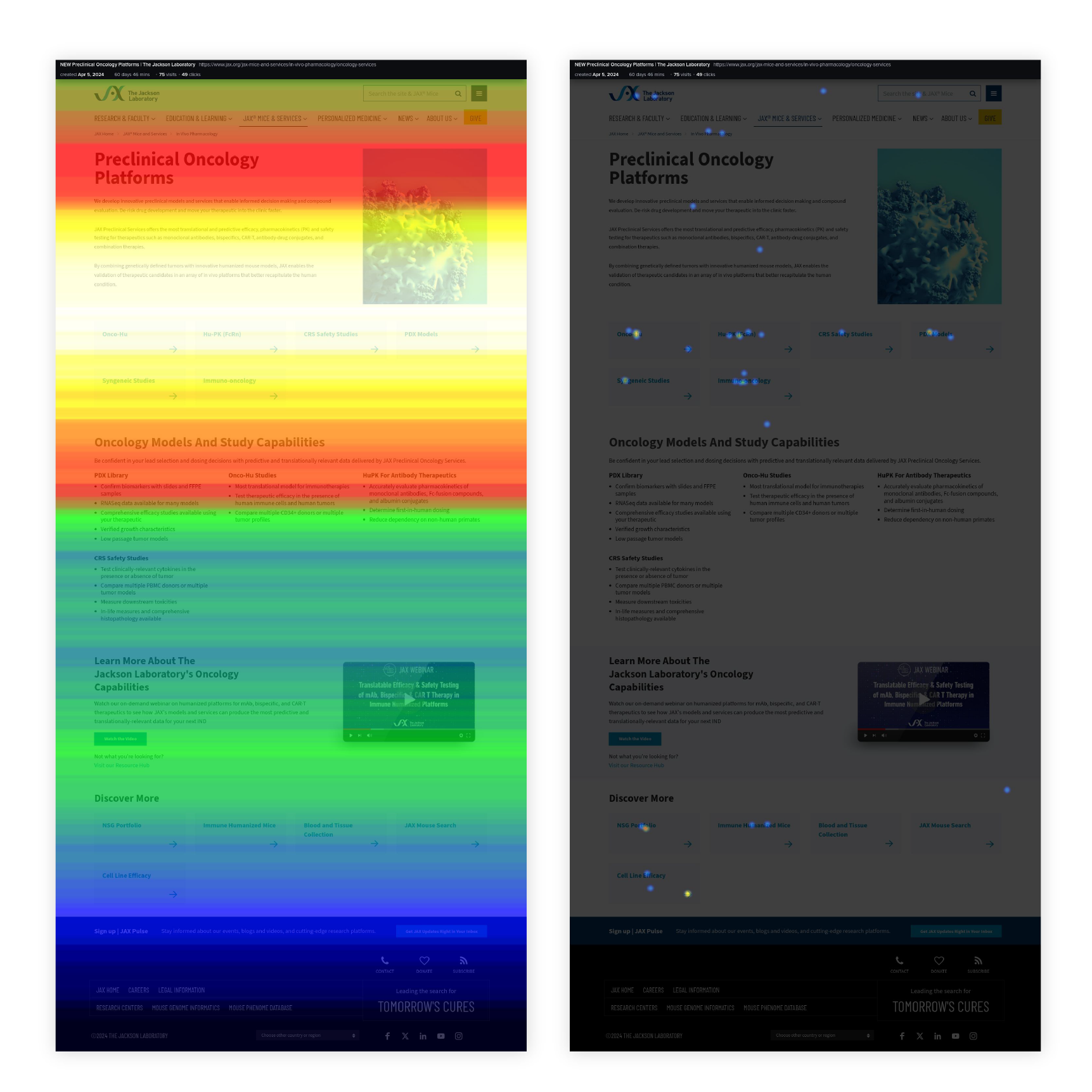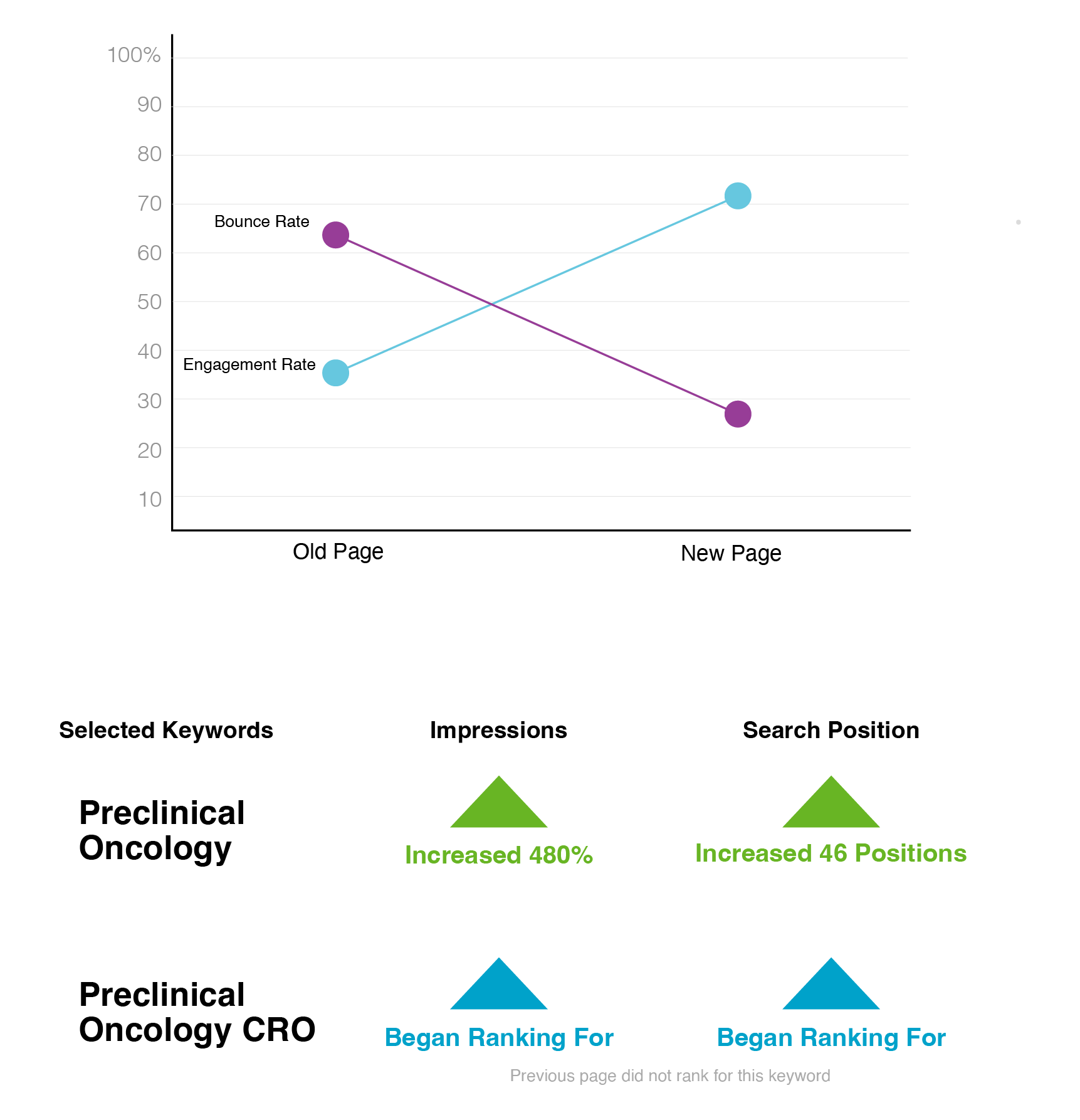Overview
As part of the larger website update initiative, I led the redesign of the Oncology Preclinical Services webpage. This page was designed to serve as a central hub, guiding customers to the specific services most relevant to their needs. It also functions as a landing page for marketing campaigns promoting JAX’s oncology capabilities and presence at oncology-related events.
My Role: Creative Director, Project Manager, Graphic Designer, Experience Designer, Developer Liaison, SEO Manager
My Tools: Figma, Adobe Illustrator, Adobe Workfront
Challenge
How might we create an engaging webpage that allows the Regular user to navigate to their specific need while also presenting all our capabilities in a digestible way for a Beginner audience?
Solution
Through a collaborative approach, we redesigned the webpage with a clearer information hierarchy, enabling regular users to quickly find the services most relevant to them while providing beginner users with accessible, comprehensive information about all available offerings. This visual overhaul was paired with a strategic content update focused on integrating more targeted, relevant keywords.
The results included a 35% reduction in bounce rate, a 34.88% increase in engagement, and improved search positions and impressions, reflecting the success of the updated design and SEO strategy.
Pre-Work
I prepared a comprehensive Pre-Work Packet, which acted as a project brief before engaging the content team and product manager. The packet included key details such as the ideal audience, relevant marketing efforts, suggested keywords, and insights from user research.
Through analysis of user behavior using Google Analytics, I identified that many customers were unsure of what to do on this page, as the majority would navigate back to their previous page. This insight shaped the direction of the redesign, ensuring we addressed user confusion and created a more intuitive experience.
Page Update
The original secondary navigation bar, a full-width black bar, was frequently overlooked by users. To address this, we replaced it with lightweight but prominent buttons that were more visually apparent without overpowering the page design.
Beneath the navigation, we added a list of capabilities paired with their benefits to guide the Exploring audience—those unsure of the specific service they needed. These were presented as concise bullet points for easy scanning, ensuring accessibility and clarity.
All UI elements were drawn from a cross-collaborative UX Design System developed with teams across the lab. This not only ensured the page was on-brand and visually consistent with the rest of the site but also gave it a modern, forward-looking aesthetic that better aligned with the organization's mission.
Post Update Evaluation
Three months after the page update, I conducted a thorough analysis to assess its performance. This evaluation was compiled into a Post-Work Packet, which I shared with stakeholders to determine if further updates were necessary.
Using Crazy Egg, I reviewed heat maps and scroll maps to analyze user behavior. The data showed that users were scrolling to a typical page depth for our site, and the heat maps confirmed that users were recognizing and engaging with the light blue buttons as intended, using them for further exploration.
Google Analytics provided additional insights, revealing significant improvements in page engagement and a noticeable reduction in the bounce rate. These metrics indicated that the previous issue of users being unsure where to navigate next had been successfully addressed.
Keyword data from Google Search Console further validated the update’s success. Two targeted keywords showed marked improvement, achieving higher impressions and reaching the first page of Google search results. Notably, one of the keywords hadn’t even registered as relevant in the prior page version, marking a significant step forward. These outcomes reinforced our confidence that the page updates were effectively reaching the intended audience and meeting strategic goals.

